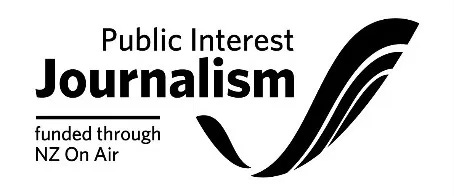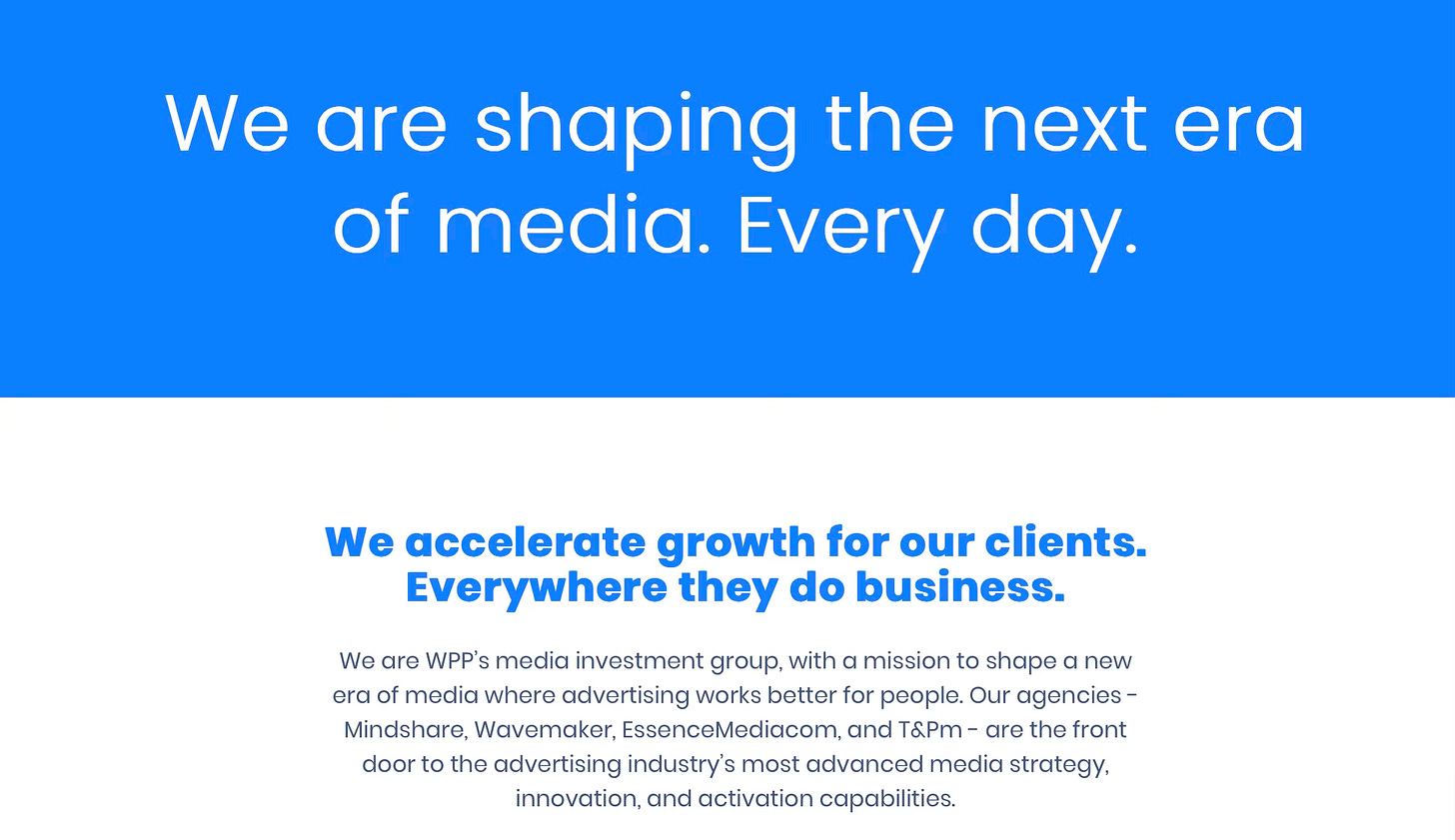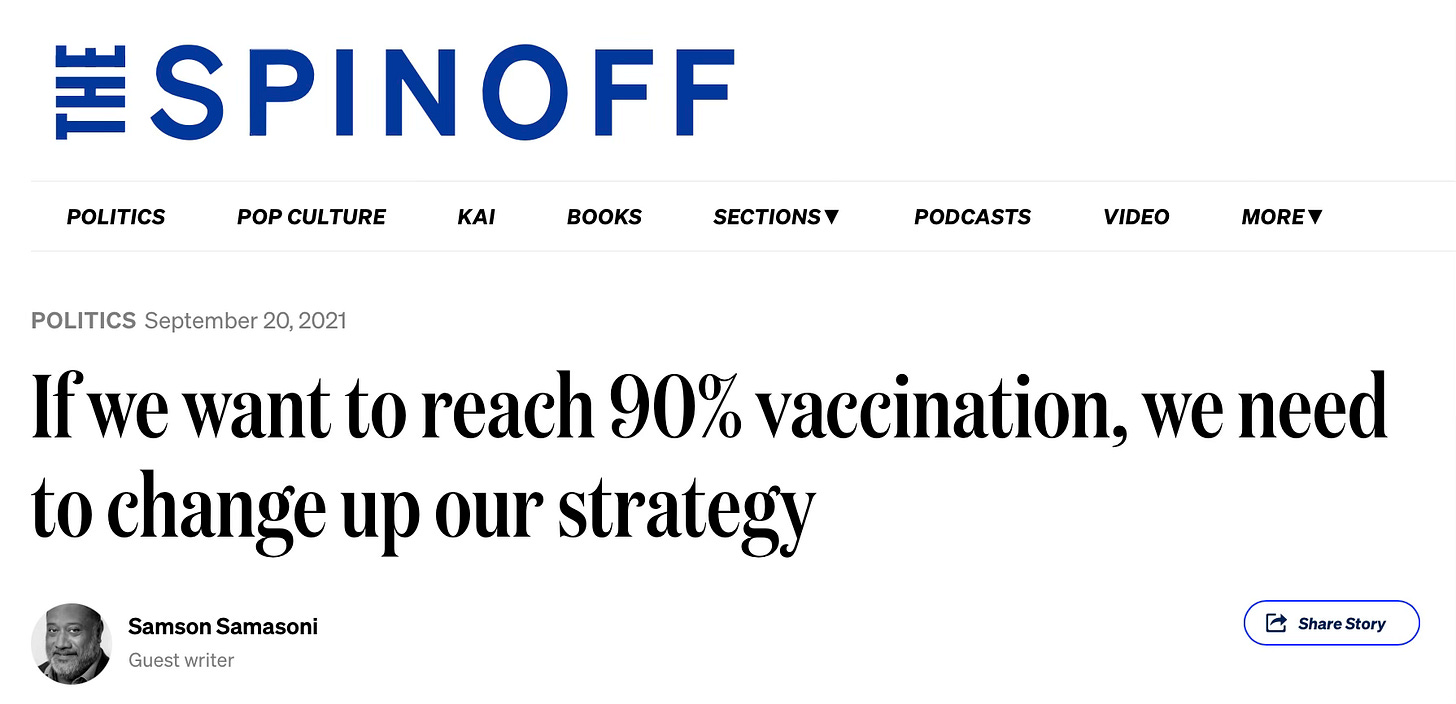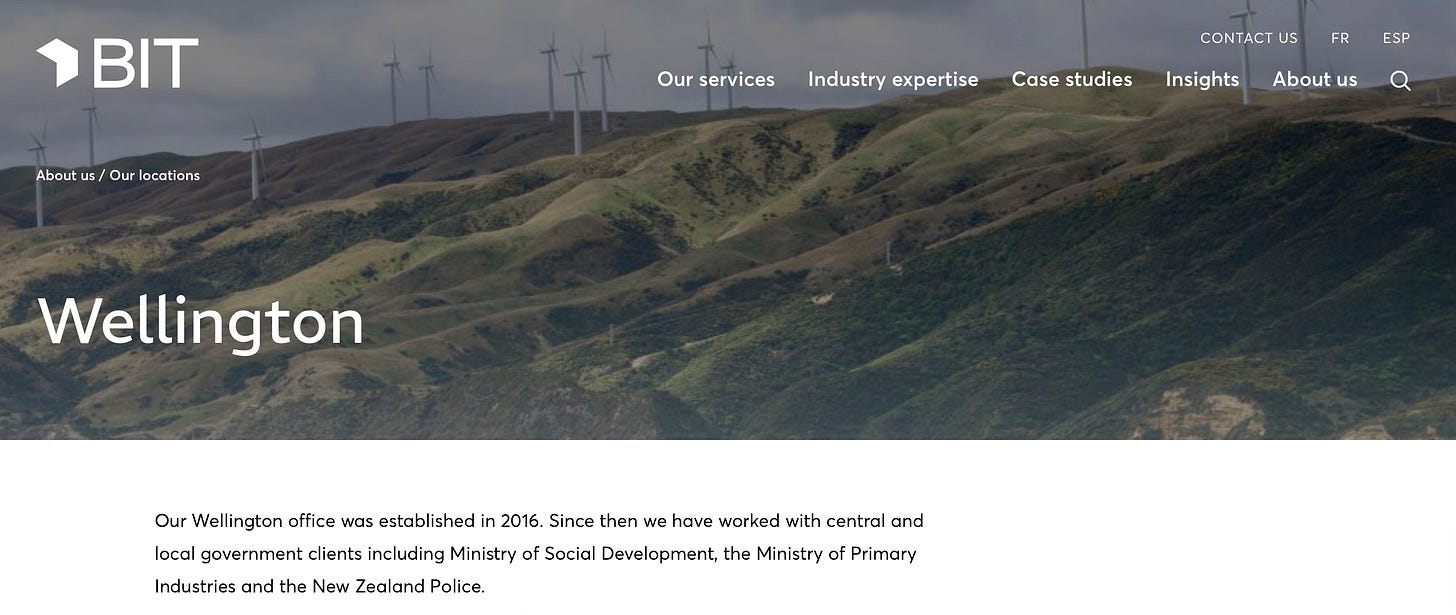A look into Mass Media as a public health tool during the Covid years.
A useful communication strategy to creating compliant population.
A useful communication strategy for creating compliant populations.
During the Covid pandemic, New Zealand’s mainstream media, bolstered by exceptional amounts of government funding and behavioural strategies, assumed the role of a de facto public health tool.
Far from merely reporting unbiased news, media outlets actively shaped public perceptions, promoted a singular government 'approved' narrative, and suppressed dissenting voices.
This raises profound questions about media independence, ethical responsibility, and the boundaries of journalism in public health crises. Media overstepped its role, undermining public trust, free speech, and democratic principles - qualities which supposedly underpin New Zealand's ethos.
This video from a wider discussion with Behavioural Scientist, David Charalambous states it plainly.
Media needs to be held accountable for the way they were handled,
and manhandled by money during the pandemic.
Defining Media’s Role in Public Health:
Public-owned media has long served as an essential tool for information during public emergencies. The large reach of media outlets is incredibly important in efficient communication. It assists with relaying critical updates to the public.
Thus, in New Zealand, the entire mainstream media space became central to the Covid response, broadcasting government announcements, hosting what were called 'expert commentators', and driving public compliance with health mandates.
So, whether intended or not, this role extended quickly beyond 'journalism' into public health messaging and the promotion of compliance, as outlets dispensed 'health advice' without the expertise or accountability required of medical professionals.
For example, television and radio segments frequently featured commentators promoting vaccines or lockdown measures (and even future lockdowns) without disclaimers clarifying their qualifications, potential biases or conflicts of interest.
The supposedly "unprecedented" moderately bad cold virus, until the booster program made waves of Covid illness inevitable and debilitating) was never reason to suspend normality, human rights and allow the breaking of many laws.
All media at the time appeared to practice medicine without a licence, particularly during what we now call ‘the mandates’. One such example was Hilary Barry rewarding viewers with a chocolate fish for their first vaccine.
The media promoted the Covid vaccine as universally safe and effective, without acknowledging the need for or providing proper informed consent, without questioning potential risks, or without considering viewers’ individual health conditions.
This promotion of Covid vaccines was blatantly unethical and was practicing medicine without a licence, as my team and I have called out repeatedly.
The blurring of these lines raises a critical question: how were media, untrained in medicine, without any experience or training in medical fields, freely wielding such influence over public health decisions?
Unlike doctors, who faced strict and extraordinary regulatory oversight, were significantly punished, humiliated and faced huge costs and fines for daring to defend norms of science and ethics, media outlets operated with impunity, shaping public perception in ways that enabled the violation of hard won principles, freely given informed consent, bodily autonomy, protecting children and the sanctity of pregnancy.
Media consumers were supposed to interpret its advice as authoritative, rather than opinion based. Thus it becomes paramount to examine media’s duty of care (or lack thereof) along with its ethical grounding in the contexts of crises.
Clearly, however, many media outlets openly were paid to promote a specific narrative with the aim of achieving a predetermined outcome which this document will examine.
Given the lock-step timing and tactics seen around the world there is an obvious playbook being followed - and why wouldn't there be, given the global scale and reach of many behemoth media corporations and their influence on Western governments?
NZ Government Funding: A tool for control
The government’s financial influence over media was a key decision made during the Covid response. Perhaps by sheer coincidence, this imperative to capture media was signalled during the remarkably timed ‘Event 201’ of September 2019, the table top exercise at Johns Hopkins which foresaw the need to react to a global coronavirus pandemic.
Starting in 2020, millions of taxpayer dollars were funnelled through to news outlets, creating powerful incentives to align with official narratives.
$50 million was almost immediately given to free “up cash in the short term to help the industry get through the immediate crisis”.
Through the international and generous tentacles of the Public Interest Journalism Fund (PIJF) (which is still in place until January 2026) and extensive advertising budgets, a further $55 million was pledged to New Zealand Media to promote government messaging.
Yet when you add in the advertising budgets, the total funding becomes astronomical. Between April 2020 and August 2022, the government spent $116,603,499 on the 'Unite Against COVID-19' and vaccine campaigns, with significant allocations made to mainstream media outlets.
That doesn’t include the pharmaceutical companies who were heavily involved in creating advertising campaigns, and even joined with Marvel to create comics about getting vaccinated.
This substantial government funding suffocated open debate, creating an environment where dissenting voices were ridiculed and hounded as conspiracy theorists and independent journalism was cast quite literally as criminally dangerous.
Key PIJF recipients included:
At some points in history, and in some briefly enlightened societies, journalism became valued for holding those in power to account and ensuring the truth reached the public, no matter the cost to people's confidence in the State.
In recent decades, however, this mission is largely lost to mindless click bait and fear driven narratives. Today, we find government departments sending out pre-packaged statements and images to media, repeating rules, regulations, and fear-driven narratives.
One editor for a major New Zealand media outlet has clearly stated their “primary ethical consideration is to make money”. Thus no questioning of the truth, or holding governments to account for their policies and legislation, it is only really about the money.
Funds were supplemented by strategic partnerships with global entities, such as the World Health Organisation (WHO), which collaborated with outlets like The Spinoff to promote emergency messaging.
U.S.A.I.D funded Internews, also channeled advertising revenue to compliant media through a collaboration with GroupM, a global media investment firm.
Outlets who deviated from the prescribed narrative risked losing lucrative contracts, creating a compounding effect on what should have been, in a much idealised world, independent reporting.
The financial dependency on these funders raises serious concerns about media impartiality. State-owned broadcasters like RNZ and TVNZ in particular, became staunch proponents of daily government directives, prompting questions about their editorial independence.
The scale of funding, combined with the government’s ability to dictate “key messages” suggests a deliberate effort to transform media into an extension of public health policy, compromising its role of watchdog of influence and manipulation.
Psychology and media expert Laura Dodsworth dissected the UK governments' meticulous campaign of fear, intimidation, division and bribery in her book 'State of Fear'.
Silencing Dissent: punishing medical professionals who dared to speak differently:
While media outlets enjoyed unchecked freedom to promote government messaging, medical professionals who raised concerns about vaccine safety, lockdown efficacy, or early treatment protocols were not given a platform to speak and faced severe repercussions.
Hundreds of doctors, nurses, and scientists were disciplined, fined, deregistered or slandered for questioning the official narrative, or for not receiving the vaccines, despite observing and reporting real-time safety signals in their practices.
All of this blatantly goes against the Bill of Rights Act, a bill created created to protect the fundamental freedoms and human rights of New Zealanders.
These health professionals, bound by ethical obligations to prioritise patient welfare, were silenced through regulatory tribunals and public vilification, a chilling tactic to ensure any other medical professional would remain compliant in order to protect their career.
In contrast, media outlets faced no such scrutiny. They were far from encouraging open discussion and debate on the issue. Deeply alarmed dissenting voices were actively discredited; justified skeptics framed as “anti-vaxxers” or “conspiracy theorists”, spouting misinformation in a quick fire effort to influence and sway public opinion.
This created a stark double standard: journalists and 'infotainment' pundits, untrained in medicine, dispensed health advice without consequence, while experts in medicine were heavily punished for exercising their professional judgment, even whilst the Medical Council of New Zealand spouted the vaccines were 100% safe.
No pharmaceutical treatment in any circumstance, at any time is ever 100% safe, particularly brand new genetic therapy products which were presented in warp speed timing without full studies completed.
We are now seeing thorough peer reviewed science showing significant safety concerns years after vaccination.
Where there is risk, it must be stated, and there must be choice, not a limited option of you are to get vaccinated in order retain your freedom, your livelihood, your home and even down to your capacity to participate in sports teams.
Such disparities undermine the principles of free debate and informed consent, which are foundational to both medicine and democracy.
Behavioural Insights and Science: The ultimate crafters of compliance.
As Laura Dodsworth made clear, above, our own government’s communication strategy, developed by the National Emergency Management Agency (NEMA) and executed by Civil Defence Public Information Management Teams, was a clear lesson in strategic compliance and behaviour change manipulation.
From the pandemic’s onset, New Zealanders were inundated with shrill fear-inducing news articles phone notifications, repetitive slogans like “Unite Against COVID-19,” and "Team of 5 million", along with carefully curated visual cues ( ie; colour coded alert levels and clever infographics which could be reassuring or slightly entertaining, yet with a manipulative subtext).
These tactics, rooted in behavioural science rather than medical procedure, were designed to heighten anxiety and surrender independent thinking, thus nurturing compliance.
The Behavioural Insights Team introduced in New Zealand in 2016, played a pivotal role in training those who crafted these key messages.
Drawing on the principals of human-centred design, the team developed multi-phased campaigns which analysed public sentiment, addressing risks and contingencies to maintain narrative control.
As it is clear to see by going through the strategies there was little, if any, medical balance to the messaging.
For example, early alerts emphasised collective responsibility, and the safety of belonging to, the "team of five million"... while later messaging targeted vaccine hesitancy with emotionally-charged appeals which to created, two classes of people , those who need to protect grandma, all while government's media perpetuated as a singular source of “truth".
The media’s role in amplifying these messages, without questioning their underlying assumptions, transformed what we used to call journalism into a tool of behavioural engineering, raising significant ethical and moral concerns.
Consequences:
The media’s alignment with government directives had far-reaching consequences. By suppressing debate and vilifying dissent, outlets eroded public trust in both media and health institutions.
The one-sided narrative, enforced through funding and behavioral tactics, fuelled social division, mental health crises, and economic hardship from mandates and lockdowns.
Businesses were shut down and financial hardship continues into 2025, communities divided into two classes: humans and those second class citizens who questioned mandates, who faced humiliation and vitriol for their stance.
Those who took the vaccine and were injured by it, such as members of my own family, were classed as ‘antivaxxers’ and their injuries ignored by medical professionals as simply ‘anxiety’.
Media has sidelined this deeply affected group of New Zealanders, leaving them to suffer in silence for the sake of 'taking one for the team.'
To add insult to injury, media is still taking money to hide how badly our vaccine rollout has fared, with its unsavoury business ethic - "if it bleeds it leads".
Nowhere is this more dreadful than the emergent stories now where both parents die in short order, leaving young children behind. Yet, not a single dot will be joined as no reasonable questions are asked by the various 'open justice' journalists.
The inevitable erosion of trust in both media and government poses other long term risks for public health, with society now having the potential to withdraw their cooperation and obedience as the social contract between media and consumers is well and truly breached.
The media’s failure to uphold its role as a guardian of truth and a fulcrom of analysis rather than side with an information dictatorship, coupled with its complicity in silencing experts, has weakened the democratic foundations New Zealand was built upon, a society where open debate and free speech are fundamental human rights.
The legacy of the Covid years is a damaged and deeply polarised topic within society along with a media landscape where all ethical foundations were sacrificed to finances pouring in.
Recommendations:
Royal Commission investigation: A comprehensive analysis should examine the extent of government funding, media bias, and the silencing of medical professionals. It must assess whether outlets breached legal and professional boundaries by dispensing unregulated health advice, and recommend reforms to ensure accountability.
Support independent and unbiased media: Work to disallow silencing anyone, especially professionals, who has a different opinion.
Codify media ethics into law: Such that the principal of legality applies in media's relationship with Bill Of Rights Act. Foster outlets who prioritise truth over funding, and the subscribing to these platforms, sharing of their content, and enabling of grassroots dialogue can allow critical assessment of dominant narratives, and restore balance.
Regulate media health advice: Media presenters, writers, advertisers and those recruited to public messaging on health matters, must obey the law. Outlets need to provide clear disclaimers about the qualifications of commentators.
Safeguard free speech: Policies must protect dissenting voices, particularly in science and medicine, from censorship or retribution. Encouraging open debate will strengthen public trust and ensure robust policy-making.
Enforce transparency: Media outlets should publicly disclose all government funding and partnerships, enabling audiences to assess potential biases. This transparency is essential to credibility.
Immediately cease direct to consumer pharmaceutical advertising in New Zealand: This is vital to allow a less biased media industry, by lessening the power pharmaceutical corporations yield over media outlets and their proxy access to the public.
Conclusion:
New Zealand’s mainstream media, bolstered through government funding and behavioral strategists, crossed significant ethical boundaries by acting as a public health tool during the Covid response.. This compromised journalistic independence, silenced essential debate and critical voices, along with significantly eroding public trust in institutions.
We still now continue to have medical carnage, social division, a mental health crisis, and a weakened social, judicial, economic and political foundation. This is becoming more evident as time passes.
The Royal Commission must investigate these failures, and ensure New Zealanders can drive change by supporting independent media, and demanding transparency.
By learning from this period, New Zealand could rebuild a media landscape which contributes to discovering truth, fosters debate, and serves the public, not the state nor its lobbyists.














Anna, this is a superbly written account of a truly horrific time in this nation's history. Thank you.
Anna, you have precisely revealed the strategy deployed against the population that created this horrific crime against humanity. May this submission to the Royal Comission 2 be studied thoroughly and, I pray, may criminal charges be brought. Journalist and politicians alike must be held responsible with prison time and discrace brought upon their names.